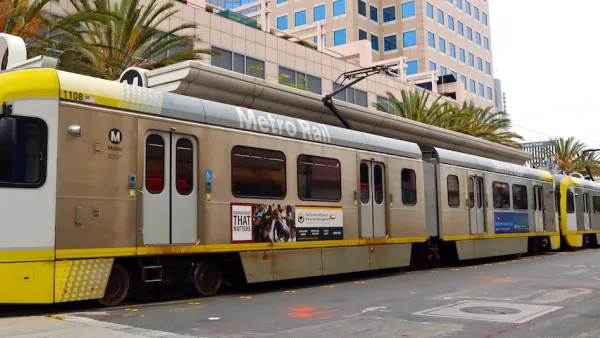More than 500 “activists, students and low-wage workers” spent their Saturday at a public hearing at the Los Angeles County Metropolitan Transportation Authority imploring the agency’s board not to raise fees.
“Officials with the Los Angeles County Metropolitan Transportation Authority have warned that the agency will face a $36-million operating budget shortfall in 2016, which could grow to $225 million in the next decade unless fares go up substantially,” reports Laura Nelson for the Los Angeles Times.
“Without higher fares, Metro will need to consider laying off nearly 1,000 employees and cutting 1 million hours of bus and rail service in 2015, agency staff members said.”
Metro claims that it needs to increase the share of its operating costs covered by fares. Metro’s ticket sales pay about one-quarter of system expenses, which ranks the lowest of any major U.S. transit agency.
In May, the Metro board will consider a number of schemes to raise fares. “One would raise the basic $1.50 bus and rail fare to $1.75 in September, to $2 in four years and $2.25 in 2021. Fares for seniors and the disabled would double to $1.10. A $75 monthly pass would increase to $100,” according to Nelson.
A public hearing held over the weekend attracted “more than 500 activists, students and low-wage workers” to make the case that the proposed fare increases would impact the people in the city that can least afford to bear new costs. For more insight on the mood at the hearing, check out Nelson’s live tweet of the March 29 meeting.
FULL STORY: Transit riders assail proposed Metro fare hike at public hearing

Planetizen Federal Action Tracker
A weekly monitor of how Trump’s orders and actions are impacting planners and planning in America.

Restaurant Patios Were a Pandemic Win — Why Were They so Hard to Keep?
Social distancing requirements and changes in travel patterns prompted cities to pilot new uses for street and sidewalk space. Then it got complicated.

Map: Where Senate Republicans Want to Sell Your Public Lands
For public land advocates, the Senate Republicans’ proposal to sell millions of acres of public land in the West is “the biggest fight of their careers.”

Maui's Vacation Rental Debate Turns Ugly
Verbal attacks, misinformation campaigns and fistfights plague a high-stakes debate to convert thousands of vacation rentals into long-term housing.

San Francisco Suspends Traffic Calming Amidst Record Deaths
Citing “a challenging fiscal landscape,” the city will cease the program on the heels of 42 traffic deaths, including 24 pedestrians.

California Homeless Arrests, Citations Spike After Ruling
An investigation reveals that anti-homeless actions increased up to 500% after Grants Pass v. Johnson — even in cities claiming no policy change.
Urban Design for Planners 1: Software Tools
This six-course series explores essential urban design concepts using open source software and equips planners with the tools they need to participate fully in the urban design process.
Planning for Universal Design
Learn the tools for implementing Universal Design in planning regulations.
Heyer Gruel & Associates PA
JM Goldson LLC
Custer County Colorado
City of Camden Redevelopment Agency
City of Astoria
Transportation Research & Education Center (TREC) at Portland State University
Camden Redevelopment Agency
City of Claremont
Municipality of Princeton (NJ)





























